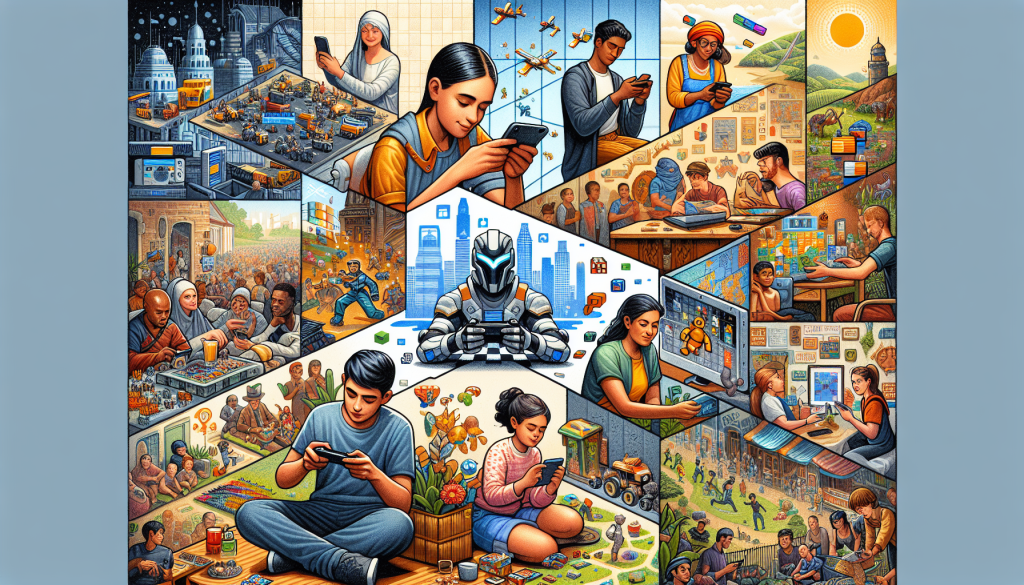The Beginnings of Video Game Design: Pixel Art Era
Where it all began. The inception of video game design has its roots deeply embedded in the era of pixel art. This was a time when video games were not just about the high-definition graphics and unparalleled realism we see today, but rather about simple, yet captivating visuals that drew players into digital realms of fantasy and adventure.
Think back to the pixelated characters of classics like Pac-Man or Space Invaders. The characters, environments, and objects were all created using pixel art, a form of digital art where images are created on the pixel level. For many, these games hold a special, nostalgic place in our hearts. But have you ever wondered how they came to be?
The Art of Pixel
The pixel art era was a period of creative innovation in video game design. These early games were designed by manually manipulating individual pixels to create characters, objects, and environments. This was a painstaking and time-consuming process, but the result was a level of creativity and originality that is still appreciated today.
Pixel art offered a unique aesthetic that was both engaging and distinctive. The abstract, blocky images were often colorful and imaginative, offering a visual experience that was different from anything seen before. This distinctive style is what set early video games apart and continues to inspire game designers today.
The Power of Limitations
Despite the lack of sophisticated technology, the limitations of pixel art actually fostered ingenuity. Designers were forced to think outside the box and use their creativity to make the most out of the limited resources. This led to the creation of some of the most iconic characters and memorable games in history.
- Super Mario Bros: The adventurous plumber with his red hat, blue overalls, and iconic mustache was born out of pixel art. Each detail, from the pipes to the power-ups, was meticulously crafted using pixel art.
- The Legend of Zelda: The series’ intricate puzzles and expansive worlds were all the product of pixel art. Even the protagonist, Link, was a masterpiece of pixel design.
- Tetris: Perhaps one of the most iconic video games of all time, Tetris is a testament to the power of simplicity. The game’s addictive gameplay and distinctively simple design are a direct result of the era’s limitations and the creativity it sparked.
These games were simple by today’s standards, but their impact was profound. They laid the foundation for the video game industry and set the stage for the advancements that were to come.
So, the next time you’re caught up in the lifelike graphics of your favorite modern game, take a moment to appreciate the artistry and creativity that paved the way in the era of pixel art.
Advancements in Technology and the Rise of 3D Modeling
As the old adage goes, “Change is the only constant,” and this couldn’t be truer in the dynamic world of video game design. Remember the days when we were captivated by the simple pixel art of Pong and Space Invaders? Well, buckle up, because we’re about to take a wild ride into the future: the age of 3D modeling in video games.
With the advent of powerful computing capabilities and advanced graphics cards, the 90s saw a seismic shift in the world of video game design. 3D modeling took center-stage, revolutionizing the way we play and perceive video games.
What is 3D Modeling, Anyway?
At its core, 3D modeling involves creating a three-dimensional representation of a physical object within a digital environment. It’s a little bit like sculpting, but instead of clay, we’re using pixels!
The Impact of 3D Modeling on Video Game Design
3D modeling brought an unprecedented level of realism and immersion to video games. Instead of flat, 2-dimensional characters and environments, we now had a whole new world to explore that was as close to reality as possible. From the intricate landscapes of Tomb Raider to the lifelike characters of Final Fantasy, the leap to 3D brought our favorite virtual worlds to life in ways we could never have imagined.
Some Milestones in 3D Video Game Design
- Super Mario 64: Released in 1996, this was one of the first successful attempts at a fully 3D platform game. The game’s exploration-based design set a new standard for 3D world building.
- The Legend of Zelda: Ocarina of Time: Released in 1998, this game pushed the boundaries of 3D graphics and introduced innovative gameplay mechanics, such as lock-on targeting.
- Grand Theft Auto III: Launched in 2001, this open-world game set in a 3D environment changed the gaming landscape forever, influencing countless games that followed.
Indeed, the rise of 3D modeling has dramatically transformed the gaming industry. But, just like with any technology, it’s continuously evolving, and the future holds even more exciting possibilities. So, whether you’re a gamer, a game designer, or simply a tech enthusiast, stay tuned in and witness as we dive deeper into the fascinating world of 3D video game design!
The Influence of Video Game Design Evolution on the Gaming Industry
As we delve into the fascinating world of video game design evolution, it’s clear to see that its impact on the gaming industry has been nothing short of revolutionary. It’s akin to watching an obscure indie film transform into a Hollywood blockbuster, packed with high-end special effects. Let’s take a trip down memory lane to appreciate this thrilling journey.
The Dawn of a New Era
The transition from pixel art to 3D modeling signaled the dawn of a new era in the gaming industry. The emphasis shifted from focusing purely on gameplay to a balance that included detailed and immersive environments. The new design approach allowed developers to create worlds that were more believable, sparking the rise of the ‘sandbox’ genre of video games, such as Minecraft and Grand Theft Auto.
Pioneer Games and the Paradigm Shift
Titles like Super Mario 64 and The Legend of Zelda: Ocarina of Time capitalized on the newfound design capabilities to deliver unforgettable gaming experiences. These games not only generated huge commercial success but also influenced the expectations and standards for subsequent video games.
The Catalyst for Industry Growth
- Increased Revenue: The evolution in video game design played a pivotal role in the industry’s exponential revenue growth. According to a report from Statista, the global video game market value skyrocketed from around $30 billion in 2001 to over $150 billion in 2019.
- Expansion of Audience: Improved game design also expanded the demographic reach of video games. The introduction of rich narratives and complex characters appealed to a broader audience, effectively transforming video games from child’s play to mainstream entertainment.
- Emergence of Esports: The advent of more sophisticated game design fostered the growth of competitive gaming or esports. Games like Counter-Strike and League of Legends, with their intricate design, have become arenas for professional competition.
New Market Opportunities
As game design evolved, it brought forth new market opportunities. The surge in mobile gaming can be attributed to the advances in game design that enabled developers to create engaging and immersive games on a smaller screen. Then, there’s the burgeoning market for virtual reality (VR) games, which is an exciting testament to just how far video game design has come.
In a nutshell, the evolution of video game design has completely transformed the landscape of the gaming industry. It’s not just about having fun anymore; it’s about creating a fully immersive experience, a whole new world to explore, and a story to tell. The influence of video game design evolution on the gaming industry is a tale of innovation, growth, and endless possibilities.
Impact of Video Game Design Changes on Player Expectations and Experiences
As video game design has evolved, so too have player expectations and experiences. It’s incredible to witness how the gaming landscape has shifted over time, embracing new technologies while never losing sight of the immersive and enjoyable experiences that make gaming so incredibly popular. Let’s dive in and explore this exciting topic further!
Heightened Player Expectations
With the rise of advanced graphical capabilities and more intricate design possibilities, players have naturally developed higher expectations for their gaming experiences. Remember when we were just thrilled to guide a two-dimensional Mario through pixelated landscapes? Those days are long past.
- Today, gamers expect rich, immersive worlds that are visually stunning and offer an incredible depth of interaction.
- Gamers also expect dynamic game characters that possess a degree of personality and complexity that rivals those of film and literature.
- The narrative aspect of games has also become an important player expectation. We’re not just playing games anymore, we’re living stories.
Game designers have certainly risen to the challenge, creating games that are more like interactive works of art than simple entertainment.
Enhanced Player Experiences
Not only has the evolution of video game design led to higher expectations, but it’s also greatly enhanced the overall player experience.
- Firstly, the incorporation of 3D environments has allowed for a level of immersion that was previously unattainable. Exploring a virtual world in three dimensions is a whole different ball game than navigating a flat, 2D plane.
- Secondly, the development of complex game mechanics and AI has made games more challenging, engaging, and, at times, unpredictable. This leads to a more satisfying gaming experience, whether you’re pitting your skills against a cunning AI opponent or working out complex puzzles.
- Lastly, the emergence of online gaming and virtual reality has opened up a world of social interaction and realism that has profoundly changed the way we play.
The evolution of video game design has undeniably revolutionized the world of gaming, taking player expectations and experiences to unprecedented heights. However, at the heart of it all, one thing remains constant – our love for a good, engaging game.












